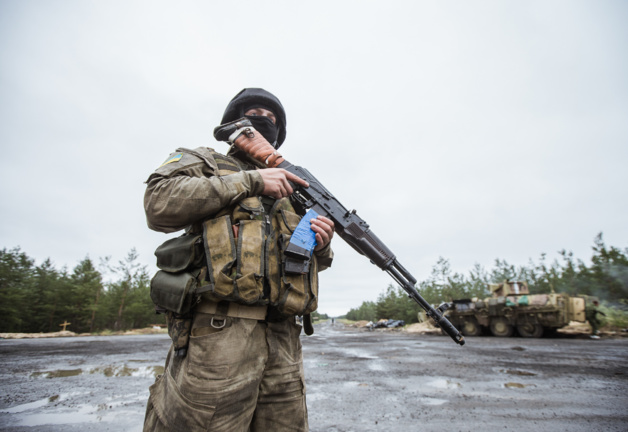Over the last year, the American government has sent a total of $61 million of humanitarian assistance to Kiev, and has pledged a further $18 million dollars as of the 27th of May. Precisely what proportion of this assistance has been in the form of weapons has remained undisclosed, however a number of Humvees have since been identified in Eastern Ukraine in regions of heavy fighting. There has been speculation that Poroshenko, Ukraine’s current President, has recently signed an arms deal with the UAE at IDEX 2015.
Government consultants have advised the US government not to send further aid, in the form of arms, to the Kiev forces. This comes amidst fears that the Kremlin has the capability to quickly match and exceed the influx of arms from America, supplying the separatists in Lugansk and Donetsk with weapons directly through the Russian border. The fact that Russia has stockpiles of weapons on the border amassed at the time of the collapse of the USSR, has compounded these fears.
The lack of free flowing information out of Ukraine, and the limits placed on the entry of foreign journalists into the Eastern region, has made it difficult for organisations, including the OSCE, to identify exactly what is happening on the ground. It has however been confirmed that the ceasefire announced last February has been broken 37 times in the past 24 hours. The supply of arms to the Kiev forces fighting the Russian Separatists, has been discussed as a viable solution to the conflict. However, questions have been raised regarding the efficacy of supplying arms to specific factions for peace enforcement purposes.
Looking at history, the attempts of the United Nations to enforce peace by sending military assistance to specific regions have been largely unsuccessful. The UN Mission to Somalia led by the USA in 1992, UNISOM I, is often cited as one of the biggest diplomatic disasters in recent history. The UN mission, UNPROFOR, is still assisting the governments of Bosnia and Kosovo with regional peace enforcement. Although the supply of weapons and military forces to Somalia and Bosnia did not directly contribute to the worsening of the crises, it achieved little in ameliorating the situation.
The question remains, if the European and American Governments decide to supply the forces of Kiev with more military assistance, are they able to manage the potential fallout? Even if Russia do not interpret the move as direct aggression, a call to war, the flagrant dismissal of ceasefire agreements by both sides means that a fast resolution to the conflict remains unforeseeable. Lack of resources, coupled with the Russian Veto Power, make it unlikely for a peace enforcement mission to be sent to Ukraine. The President of Ukraine has repeatedly called for the deployment of EU Peacekeepers to the Eastern region after major defeats in Debaltsevo and Donetsk. This request has consistently been denied.
Despite Lugansk and Donetsk being given Special Status after a recent election, the conflict is continuing to escalate, with regular shelling and bombing of the region.
Currently, it seems unlikely that governments, except the UAE, will openly commit to supplying boots on the ground or weapons to Kiev. Hybrid and guerrilla warfare continues to take its toll on both sides, with arms flooding in across Ukraine’s borders, and soft diplomatic instruments being used wherever possible. It will fall to individual governments to make the next deciding move in the conflict. Until then, Ukraine’s future remains divided and unstable.





























